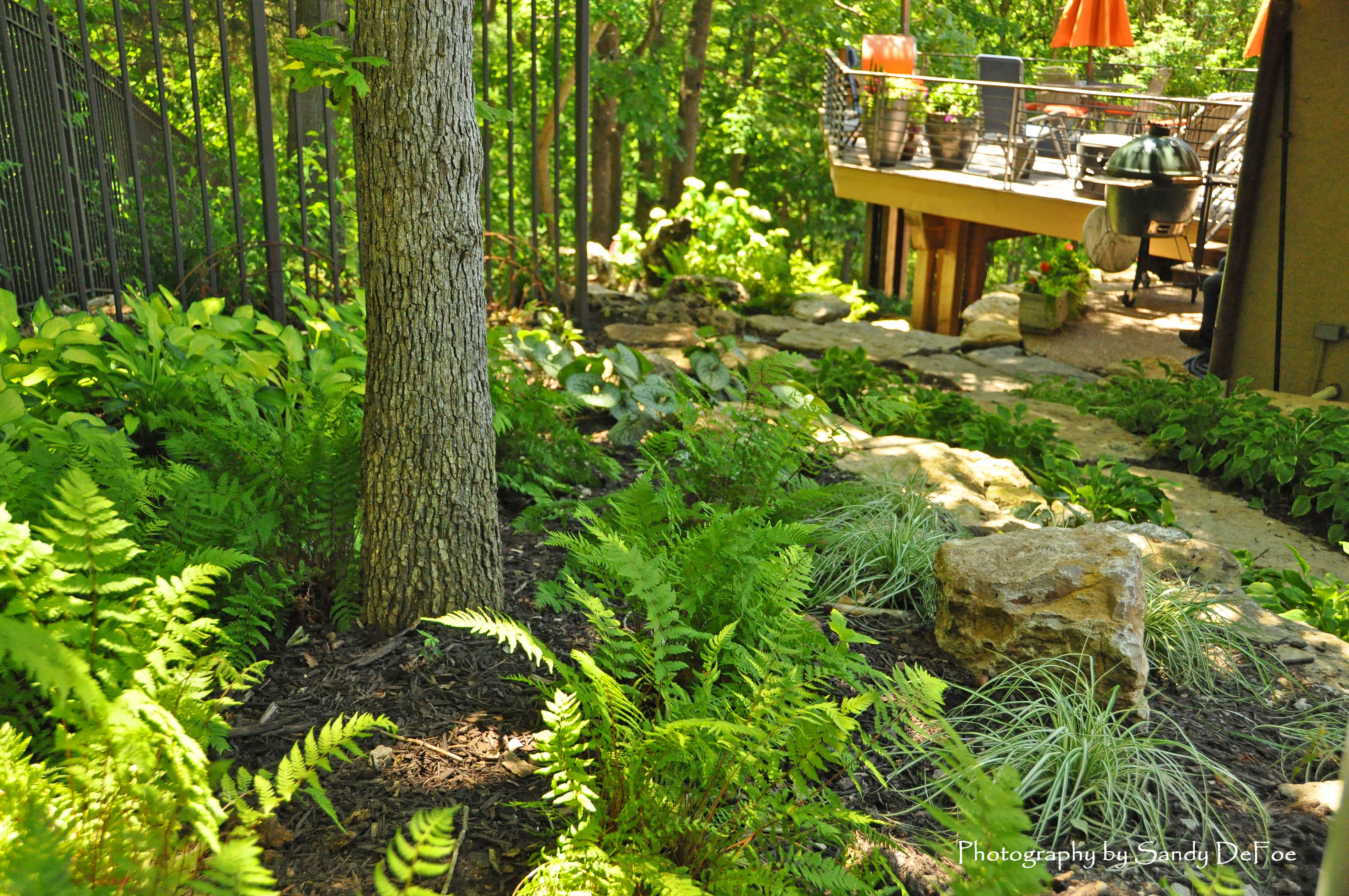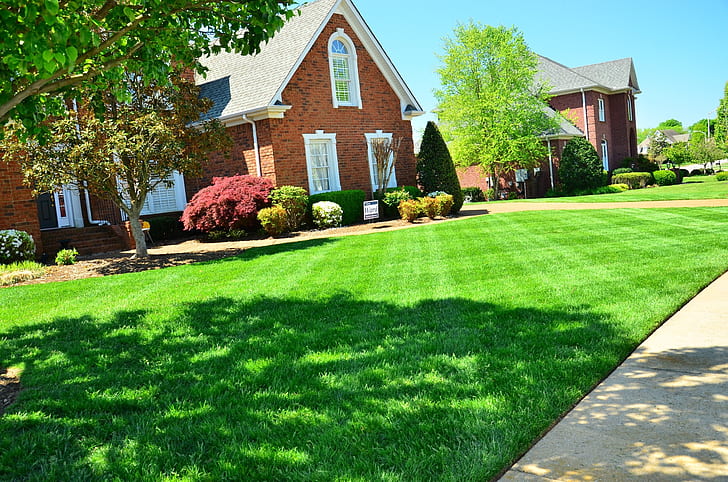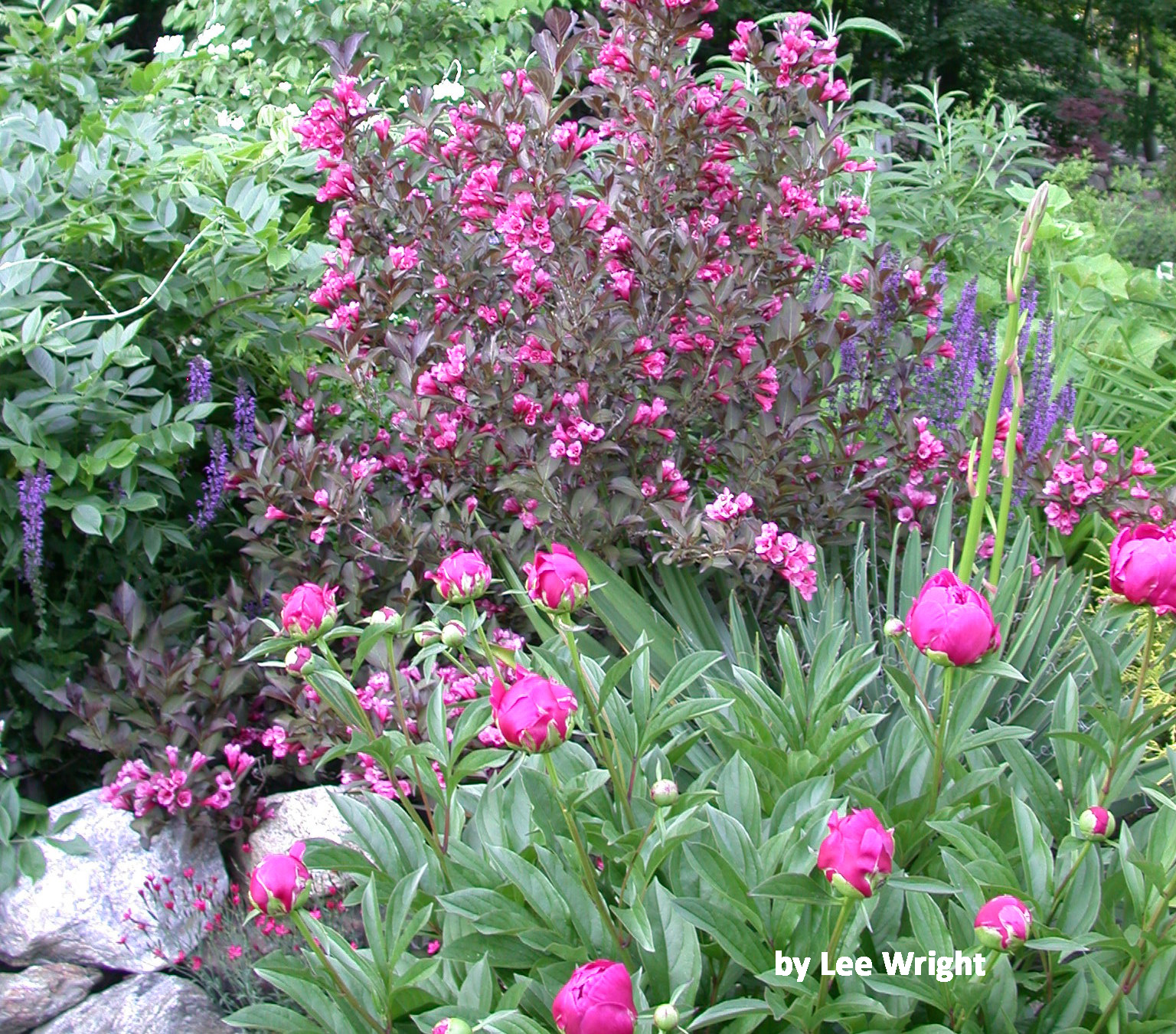By Sandra Nelson
As much as I love gardening, I absolutely HATE the mindless, time-consuming and oftentimes expensive routine maintenance chores involved in taking care of a traditionally landscaped yard.  Rather than a place to relax and unwind, the idealized suburban landscape of perfectly manicured turf, neatly edged walkways and precisely pruned shrubs can easily become another back-breaking responsibility. There are ways however, to tweak a design that reduce the workload without sacrificing the beauty.
Rather than a place to relax and unwind, the idealized suburban landscape of perfectly manicured turf, neatly edged walkways and precisely pruned shrubs can easily become another back-breaking responsibility. There are ways however, to tweak a design that reduce the workload without sacrificing the beauty.
Scale down the lawn area.
Lush, green grass is beautiful, but it’s also costly in more ways than one. Recent studies revealed that the average American spends 12 hours each month THINKING about their lawns and then an additional 32 hours a month WORKING on their lawns. They use 800 million gallons of fuel mowing, trimming and blowing (and spill another 17 million gallons) and spend 36 billion dollars on products to weed, feed and de-bug their grass. 33% of the water their households use is for turf irrigation, which averages 100+ gallons per day. Adding insult to injury, turf grass, because it consists of a single type of plant, offers little in the way of food or shelter to local wildlife, reducing ecological diversity. If these numbers alarm you, know that you do have choices!
- Switch portions of your yard over to native plant species that act as no-mow ground covers. Because natives tend to be more compatible with the soil and climate conditions they require less pampering than turf. That means less water, fewer chemical applications and a healthier environment for you and for wildlife. Native sedges can be attractive substitutes for turfgrass.
- Include clover seed in your reseedings. Clover, which is a member of the legume family, is beneficial for soil health. It reduces the need for fertilizer in two different ways. First, it works with colonies of bacteria to add nitrogen to the soil. Then,when it decomposes, it adds trace minerals which are taken up by the soil and the lawn grasses.
- Convert portions of your sunny lawn and shrub beds to more productive patches. An edibles garden doesn’t have to be a rectangular patch with straight rows of vegetables; it can be a kaleidoscope of striking shapes and colors tucked throughout the landscape. Interesting herbs, fruits and vegetables can be interspersed within flowering plants for riotous color and bountiful produce throughout the summer and into the fall.
Rethink your landscape design.
Trends in landscape design change over time. The 1920s, for example, focused on nature with front yard bird sanctuaries, fish ponds and rock gardens.The 30s saw massive front yard rose gardens and lilac beds, while the 40s was the era of the Victory Garden. What is considered the pinnacle today — expanses of carpet-like turf and symmetrical, green foundation plantings — is simply a version of the 1960s suburban dream, in which perfect lawns and landscaping symbolized prosperity and neighborhood pride.  Professionals today are beginning to see expectations for residential landscapes shift again. Today’s homeowners are abandoning the suburban standard and are requesting designs that are tailored to their personal tastes and lifestyles.
Professionals today are beginning to see expectations for residential landscapes shift again. Today’s homeowners are abandoning the suburban standard and are requesting designs that are tailored to their personal tastes and lifestyles.
- Replace thirsty ornamentals that require substantial, time-consuming daily waterings with plants that are drought tolerant. While the term drought tolerant plants often conjures up mental images of cacti and succulents more suited to the wilds of the Mojave desert than to a suburban foundation planting, in reality all sorts of plants, especially native species, fall under the umbrella of drought tolerant. It simply means that given the right set of conditions — for example, the right soil type and sun exposure — the plant will withstand low water conditions. Redbuds and sumacs are considered drought resistant trees. Butterfly bush, blue mist spireas and some junipers are a few drought resistant shrubs. Many ornamental grasses and perennials are also drought tolerant and work beautifully in the landscape. (Contact your local extension service office for lists of drought tolerant plants suitable for your area.) To cut the time you spend watering down even further, group plants in the landscape according to their moisture requirements.
- Choose varieties that do not require pruning to keep an attractive, compact shape. Hybridizers have been quite successful in developing a variety of shrubs that require little, if any, routine pruning. Because of their controlled growth habits, you don’t have to worry about how and when to prune. New varieties of spring blooming forsythia and weigela retain the beauty of their older cousins, but hold a refined shape without any fuss on your part.
- Add more plants. It may seem counter-intuitive, but adding more of the right plant material equals less work for you! Closely spaced, desirable plant material will crowd out unwanted vegetation, meaning you will spend less time weeding. Choosing larger sizes at planting time cuts the maintenance time even more.
- Blend boulders and stone outcroppings into the design. Adding natural stone to the landscape not only reduces maintenance (no weeding, feeding, watering or pruning needed), it gives enexpected drama and substance to the landscape in a way that plants cannot. Stone adds contrast in the design by providing texture, visual variety and depth. It introduces colors that harmonize with the surroundings and lets nature lead the design. Used in place of mulch, stone helps to absorb the summer heat and the winter chill, moving them away from the roots of plants.








